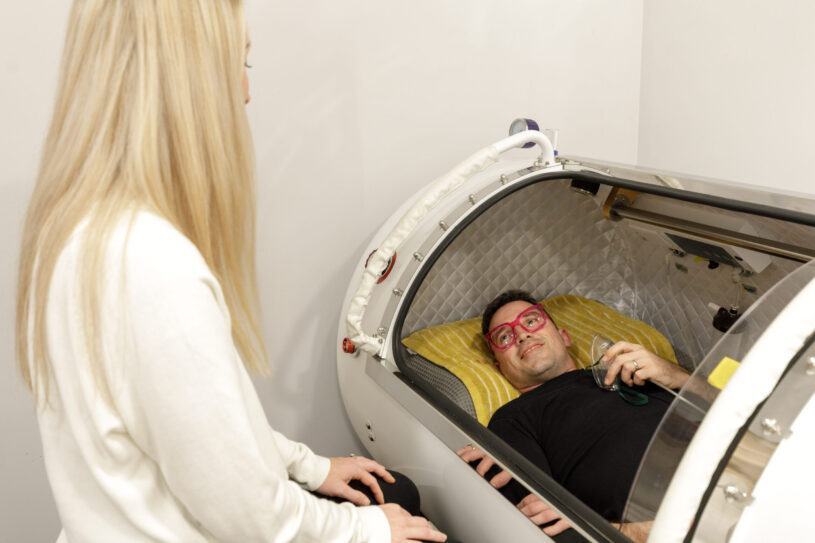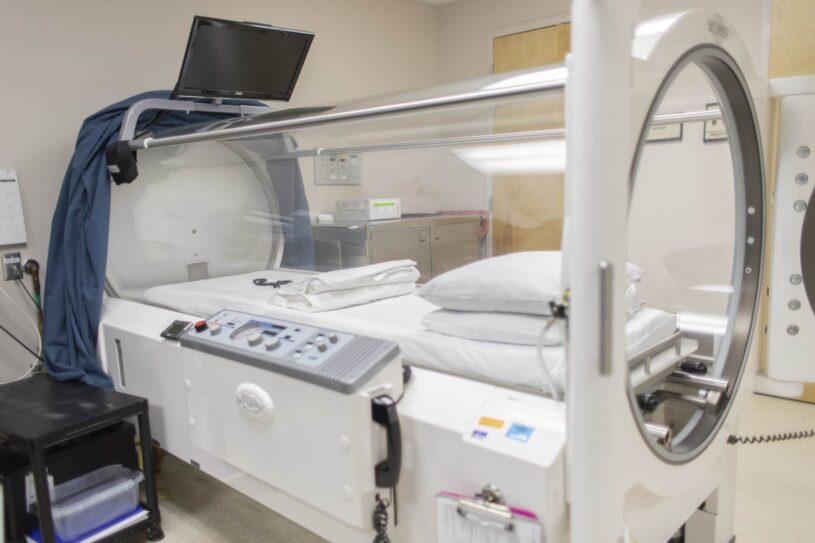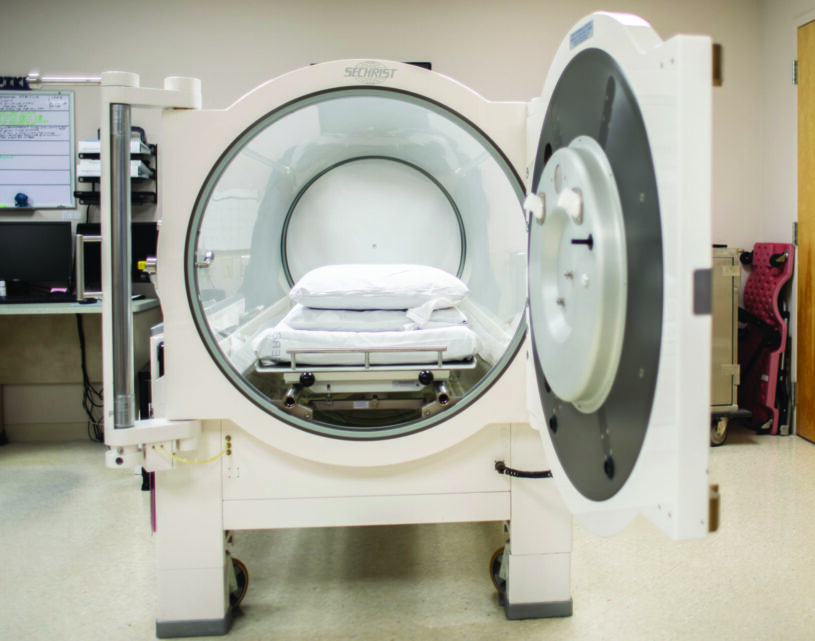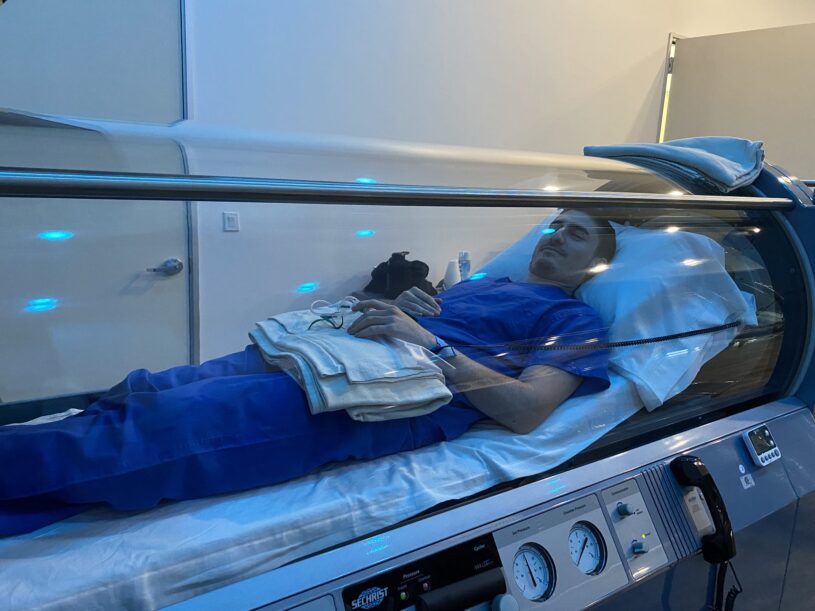Hyperbaric Oxygen Therapy (HBOT) chambers are innovative medical devices increasingly recognized for their role in various treatments. These chambers, seemingly simple in structure, harbor a complex technology instrumental in healing and recovery.
Understanding how HBOT chambers work is not just a matter of medical interest but also a window into a fascinating area of therapeutic technology. This blog post aims to demystify the workings of HBOT chambers, explaining their principles and mechanisms in a way that is accessible to all readers. By the end of this exploration, the significance and potential of HBOT in modern medicine will become clear, showcasing why understanding this technology matters.
What is HBOT?
Hyperbaric Oxygen Therapy (HBOT) is a specialized medical treatment where patients breathe pure oxygen in a room or chamber that is pressurized above normal air pressure. It’s primarily used for an array of medical conditions like decompression sickness, serious infections, air bubbles in blood vessels, and stubborn wounds resulting from diabetes or radiation injuries.
The idea of HBOT is centered around saturating the body’s tissues with oxygen, much more than what is possible at normal atmospheric pressure. This saturation is not just beneficial but often critical in accelerating healing processes and improving the recovery outcomes in various medical conditions. In this section, we will delve into the principles of HBOT, how it is different from normal O2 therapy, and its significance in today’s healthcare landscape.
The Basics of Oxygen

Oxygen is not just vital for life; it’s the cornerstone of our metabolic processes. Every cell in our body relies on oxygen to function and survive. In the context of healing, oxygen plays a pivotal role. It’s involved in energy production, fighting infections, and repairing damaged tissues.
The body’s utilization of oxygen goes beyond just breathing; it includes transporting oxygen to tissues, cellular respiration, and waste removal. Understanding the role of oxygen in our body is crucial for comprehending the effectiveness of an HBOT chamber. By exploring how our bodies consume and utilize O2, we can better appreciate why increasing its availability, as done in HBOT, can have such profound therapeutic effects.
Pressure and Oxygen
The relationship between pressure and oxygen is fundamental to the principle of HBOT. In these chambers, the atmospheric pressure is increased, often to two to three times the normal levels. This increase in pressure has a direct effect on the amount of oxygen that can be dissolved in the bloodstream.
Under normal conditions, oxygen transportation is limited by the capacity of hemoglobin in red blood cells. However, in a hyperbaric environment, O2 dissolves more readily into the plasma, the liquid part of the blood, allowing for a significantly higher distribution of O2 to tissues.
This increased oxygen solubility under pressure forms the cornerstone of HBOT’s effectiveness. In this section, we’ll explore the science behind this pressure-oxygen relationship and its implications for healing and treatment.
Inside the HBOT Chamber

The HBOT chamber is a marvel of medical engineering. Its structure is designed to safely withstand and maintain high levels of atmospheric pressure. Typically made of robust materials like steel or acrylic, these chambers can be large enough to accommodate multiple patients or small and personal for individual use. Inside, the environment is meticulously controlled to ensure safety and comfort.
The chamber includes systems for delivering O2, either through masks, hoods, or the entire chamber being pressurized with O2. Temperature and humidity are regulated, and communication systems are in place for constant contact with medical staff. This section will delve into the technical aspects of the HBOT chamber, exploring how its design and features create the ideal environment for hyperbaric oxygen therapy.
Increasing Pressure
The process of increasing pressure in an HBOT chamber is crucial for its therapeutic effect. When the chamber is pressurized, it simulates conditions similar to being underwater. The pressure increment is gradual and carefully monitored to ensure patient comfort and safety.
This increase in pressure enhances the body’s ability to absorb oxygen, allowing a greater amount of O2 to dissolve in the blood plasma. The implications of this are significant – more oxygen can reach areas in the body that are otherwise difficult to penetrate, such as damaged tissues or areas with reduced blood flow. In this section, we will explore how pressure is increased in the chamber, the physiological responses to this pressure change, and why achieving higher pressure levels is beneficial for treatment outcomes.
Oxygen Delivery

In an HBOT chamber, oxygen delivery is a critical component. Patients typically breathe 100% O2 through a mask or hood. This method ensures that they receive a much higher concentration of O2 than what’s available in the normal air. The delivery system is designed to be both efficient and safe, providing the needed oxygen levels while monitoring to prevent any complications like O2 toxicity.
Understanding how oxygen is administered in the chamber is key to appreciating the full scope of HBOT therapy. This section will cover the different methods of oxygen delivery in the chamber, how they are tailored to individual patient needs, and the safety protocols in place to ensure effective and secure treatment.
The Treatment Session
A typical HBOT treatment session involves the patient entering the chamber and breathing oxygen at high pressure for a prescribed duration. Sessions can last from 30 minutes to over two hours, depending on the condition being treated. The frequency and total number of sessions also vary based on the medical indication and patient response.
During the session, medical professionals closely monitor the patient’s condition and the chamber’s environment. This part will describe what patients can expect during an HBOT session, the procedure from start to finish, and how these sessions contribute to the overall treatment plan.
How HBOT Aids Healing
HBOT aids healing by enhancing the amount of O2 your tissues receive. Increased oxygen levels can reduce inflammation, fight bacteria, promote the growth of new blood vessels, and enhance the body’s natural healing processes. This therapy is particularly beneficial in conditions where tissues are damaged due to insufficient oxygen supply.
Conditions like diabetic foot ulcers, certain types of infections, radiation injuries, and more see marked improvement with HBOT. In this section, we’ll discuss the biological mechanisms through which HBOT facilitates healing, supported by examples and case studies of various medical conditions that benefit from this treatment.
Safety Considerations

Safety is paramount in HBOT. The high-pressure and oxygen-rich environment of the chamber poses unique risks, like barotrauma to the ears and sinuses, O2 toxicity, and in rare cases, fire hazards. Consequently, stringent safety protocols are in place.
Patients are thoroughly evaluated before treatment, and contraindications are carefully considered. During therapy, continuous monitoring and emergency procedures ensure patient safety. This part will explore the various safety considerations, how risks are managed, and the protocols in place to prevent and respond to any potential issues.
Research and Evidence
The effectiveness of HBOT is backed by extensive research and scientific evidence. Studies have demonstrated its efficacy in treating a range of conditions, from chronic wounds to carbon monoxide poisoning. Ongoing research continues to explore and expand the potential applications of this therapy. We will present an overview of the scientific evidence supporting HBOT, including recent studies and clinical trials, and discuss the evolving landscape of research in this field.
Conclusion
HBOT chambers represent a significant advancement in medical technology, offering a unique and effective means of treatment. By understanding how these chambers work, we can appreciate their potential in enhancing healing and recovery in various medical conditions. As research continues to evolve, the scope of HBOT’s applicability is likely to expand, making it an increasingly valuable tool in the medical community’s arsenal.
